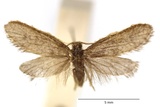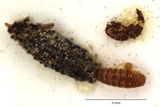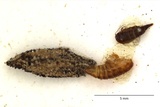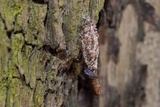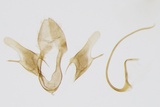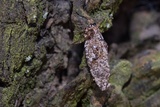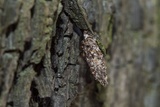Dahlica triquetrella (Hübner, [1813]) Species
Last modified: Dec. 15, 2025, 6:45 p.m.
A common species throughout Belgium.
Details
- Classification
- Family: Psychidae > Subfamily: Naryciinae > Tribus: Dahlicini > Genus: Dahlica > Species: Dahlica triquetrella
- Vernacular names
- Zandzakdrager (NL), Dreikant-Zwerg-Sackträger (DE)
- Synonyms
- Dahlica inconspicuella sensu auct.
- First mention in Belgium
- De Fré Ch. 1858. Catalogue des Microlépidoptères de la Belgique. — Annales de la Société entomologique belge 2: 45–162. On page 109 (as T.[alaeporia] Inconspicuella. Staint.). view page
- Status
-
Native
Distribution
Imago
In parthenogenetic species, adult females are apterous. They can be distinguished from females of Dahlica lichenella by the foreleg which in D. triquetrella always has 5 tarsal segments, whereas in Dahlica lichenella there are only 4 tarsal segments which are sometimes fused.
Case
A cross-section of the case is triangular, this character distinguishes this species from Dahlica lichenella in which the cross-section of the case has a round shape. It is made from silk, and covered with fine sand, soil, and even particles of dead insects. Other Dahlica species do not include insect particles in their case.
Flight periods
One generation a year with males flying from March till May.
Observed on
- Substrates:
- Lichens, Mosses and Dead leaves
The larva lives on lichens and algae growing on tree-trunks, rocks and old walls. This is supplemented with dead insects for a successful development.
Habitat
Preferably in xerothermic habitats in forests with a lot of Fagus, but also in meadows with a lot of undisturbed lower vegetation.
